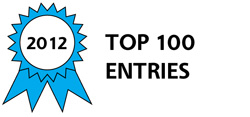
When the Pulsed Turbine duel tandem four-chambered rotor engine comes to fruition, it will display inherit redundancy characteristics, built-in safety features not found in other aviation engines. This design configuration brings two separated Pulsed Turbine Rotor Engines, (U.S. Patent: US 6,907,723 B1), together that share a centralized ignition distribution circuitry and a power shaft, to function as one engine.
To show how this new turbine engine concept could become a game-changer and establish new aviation industry standards for light to medium weight, prop-driven aircraft, we will look at: inherit design safety features, the theory of how power is generated, anticipated performance characteristics, and manufacturing cost-reduction advantages.
Inherit Design Safety Features:
1. Four simultaneously triggered ignition sources. (if one ignition source becomes inoperative the engine could still maintain 75% power output.)
2. Continuous and reliable timed spark ignition in all rotating combustion chambers prevents any possibility of a flame-out condition in this turbine engine design.
3. Shut down one-half of the engine. In theory, this engine could still continue functioning with the fuel source shutoff to one rotor, while still retaining roughly 50% power. Incorporating and manually activating “reserve” fuel injectors could significantly boost power output from the functioning rotor.
4. With two compressors at opposite ends of the engine, compressor stalling due to high or low air pressure surges felt on one compressor, can be quickly negated with the opposite compressor not being affected.
How Power is Generated:
Based on the U.S. Patent: US 6,907,723 B1, The Pulsed Turbine Rotor Engine functions as follows: air is continuously drawn in through centrifugal rotating compressors and forced through heat exchangers which surrounds high-speed, rotating four-chambered rotors.
All four combustion chambers in each rotor are charged with a compressed air-fuel mass and ignited simultaneously. At each 45 degree rotation of the engine, the alternate rotor ignites its four chambers. So, in one rotation cycle of the engine, power from “both” rotors would have been generated eight times. Each individual chamber would have been ignited four times in one complete rotation. Combine that equates to 32 individual combustion chamber ignitions for each engine rotation cycle.
Anticipated Performance Characteristics:
- More fuel efficient than conventional turbine engines.
- Quieter and less vibration than reciprocating engines.
- Engine starting and in-flight restarting reliability.
- Fuel-injection control module can receive signals from a rate-gyro sensor for instantaneous rapid throttle response.
- Can be throttled up and down continuously. (advantageous for Tilt-Rotor roll control.)
Manufacturing Advantages:
- Fewer moving parts than a reciprocating engine.
- No need for precision manufactured turbine blades, or expensive axial-flow compressors, therefore less costly.
It is hoped that this brief presentation of the Pulsed Turbine Turbo-Prop Engine has provided investment incentives to prospective aviation engine manufacturers. It is a simple concept design which embraces reliability and safety, ensured by major component redundancy, fuel-injection efficiency, and cheaper manufacturing. Thank you for spending your valuable time to read our brief Pulsed Turbine Turbo-Prop concept presentation.
-
Awards
-
 2012 Top 100 Entries
2012 Top 100 Entries
Like this entry?
-
About the Entrant
- Name:David Haskins
- Type of entry:teamTeam members:David Haskins (Inventor)
David M. Haskins (Son) - Software used for this entry:Google Sketch Up
- Patent status:patented








